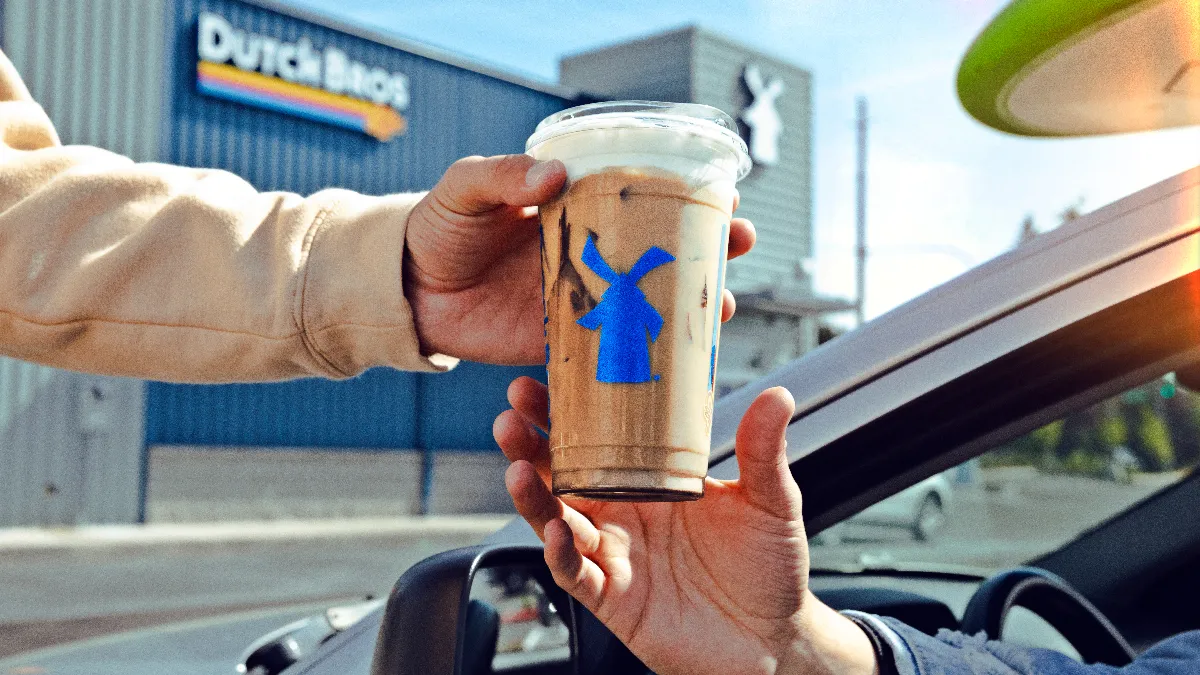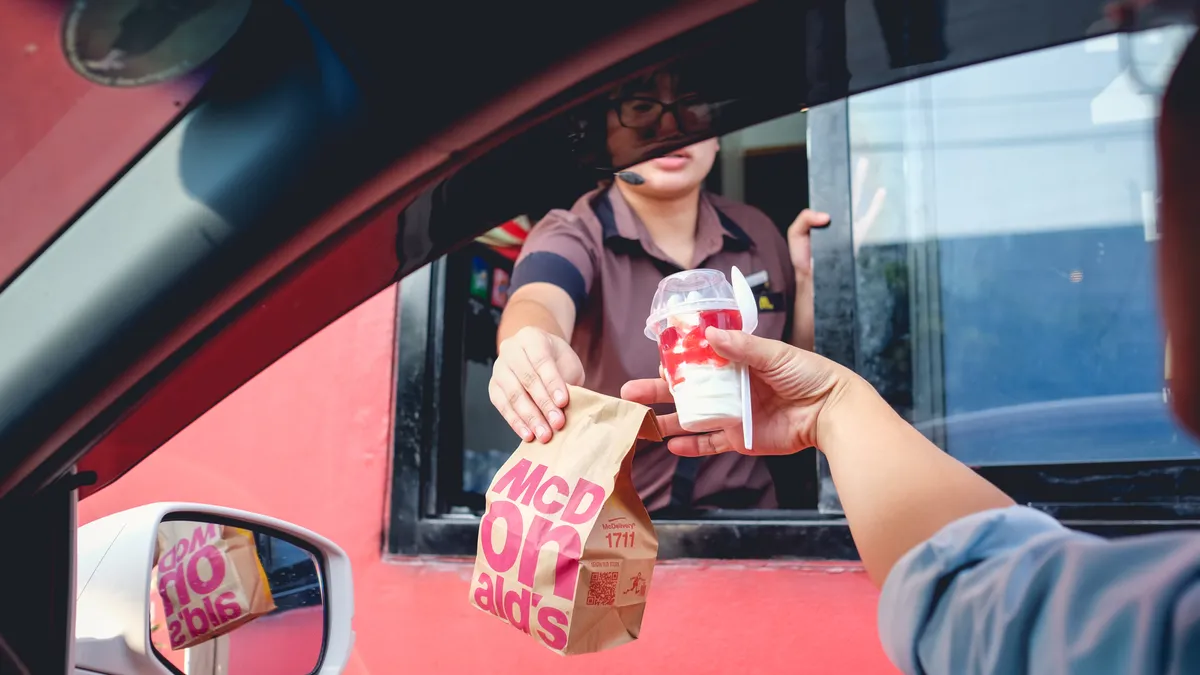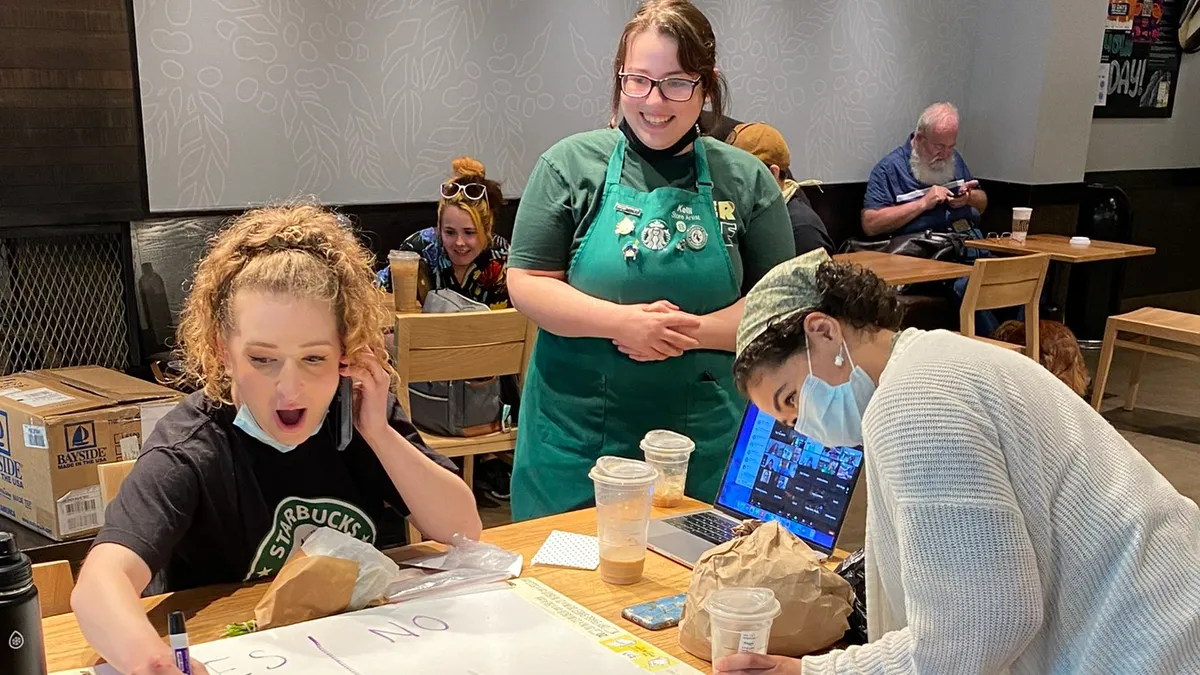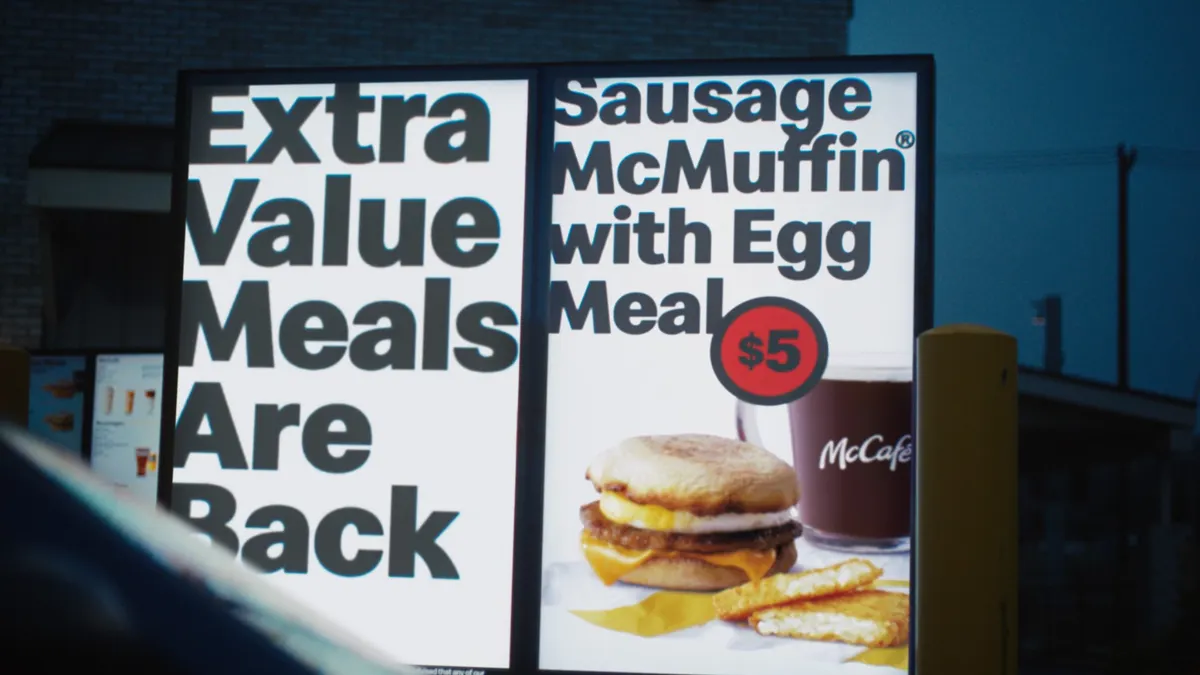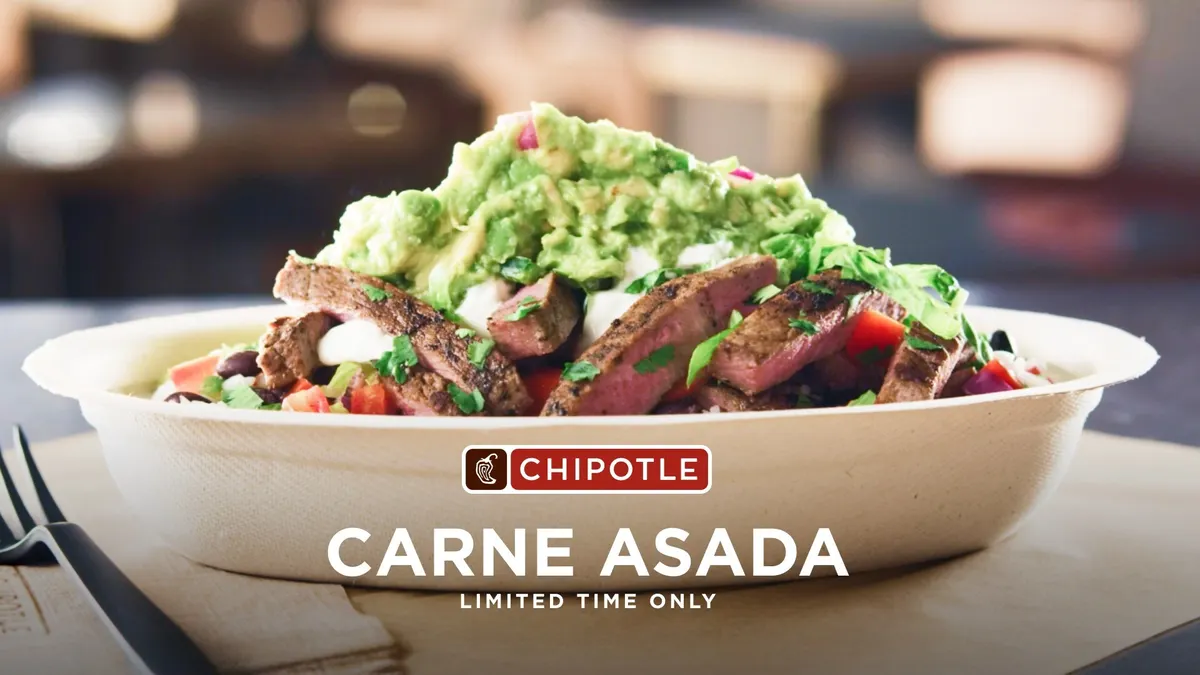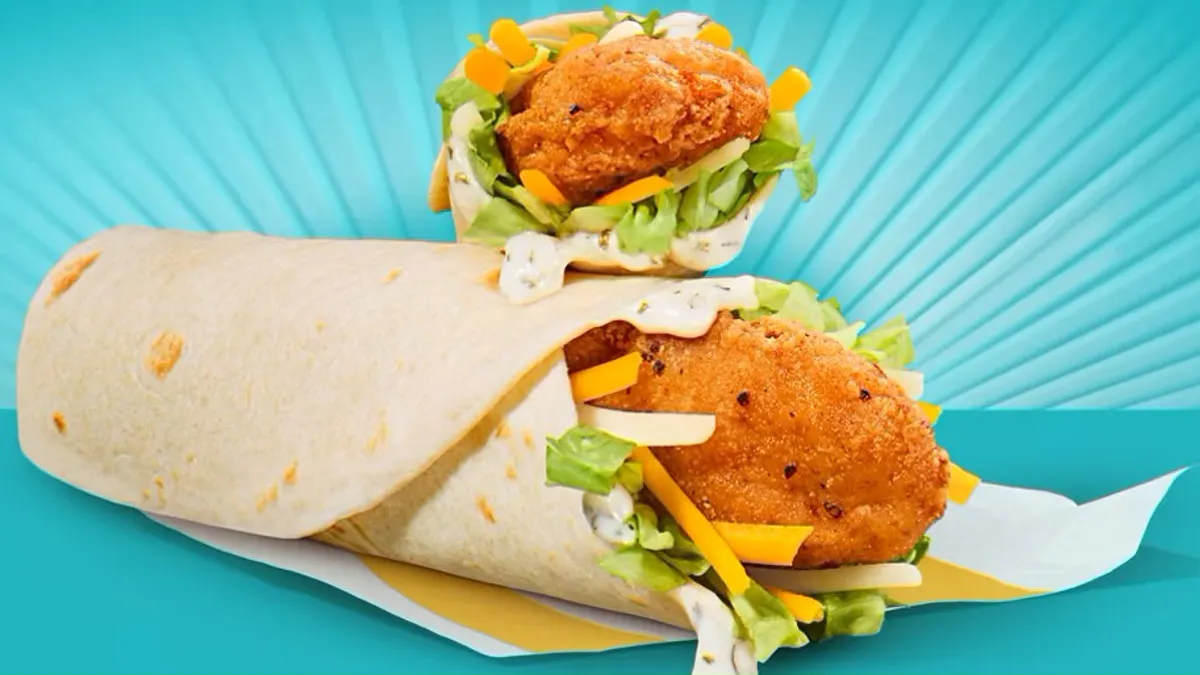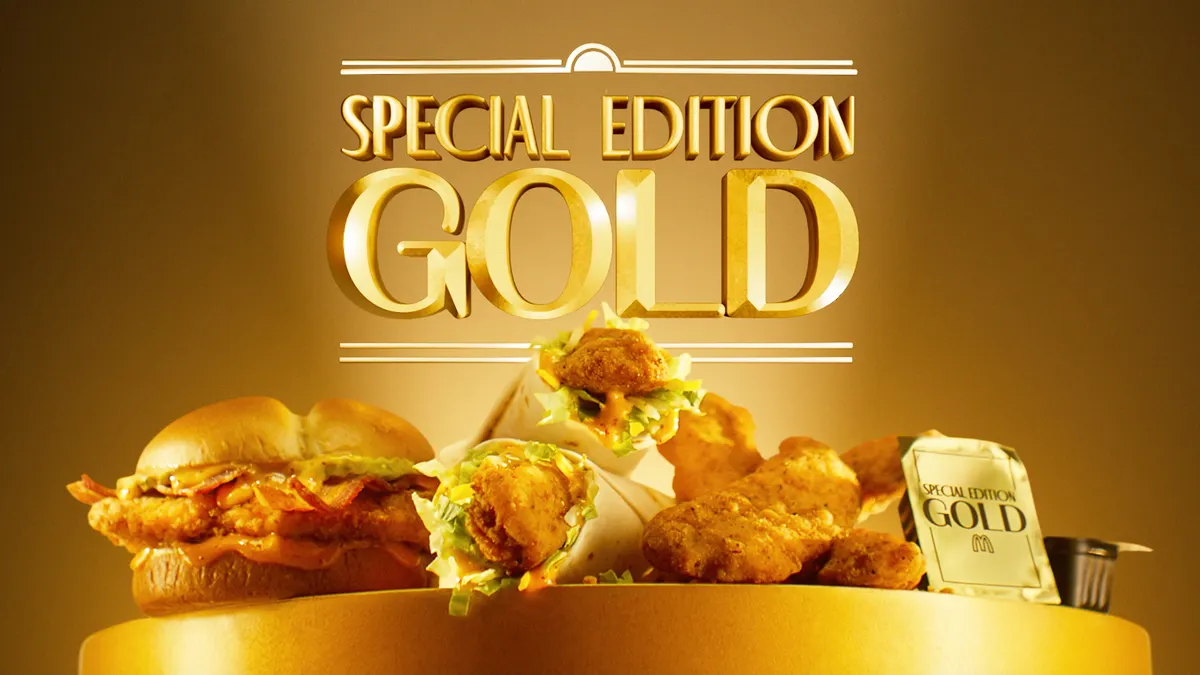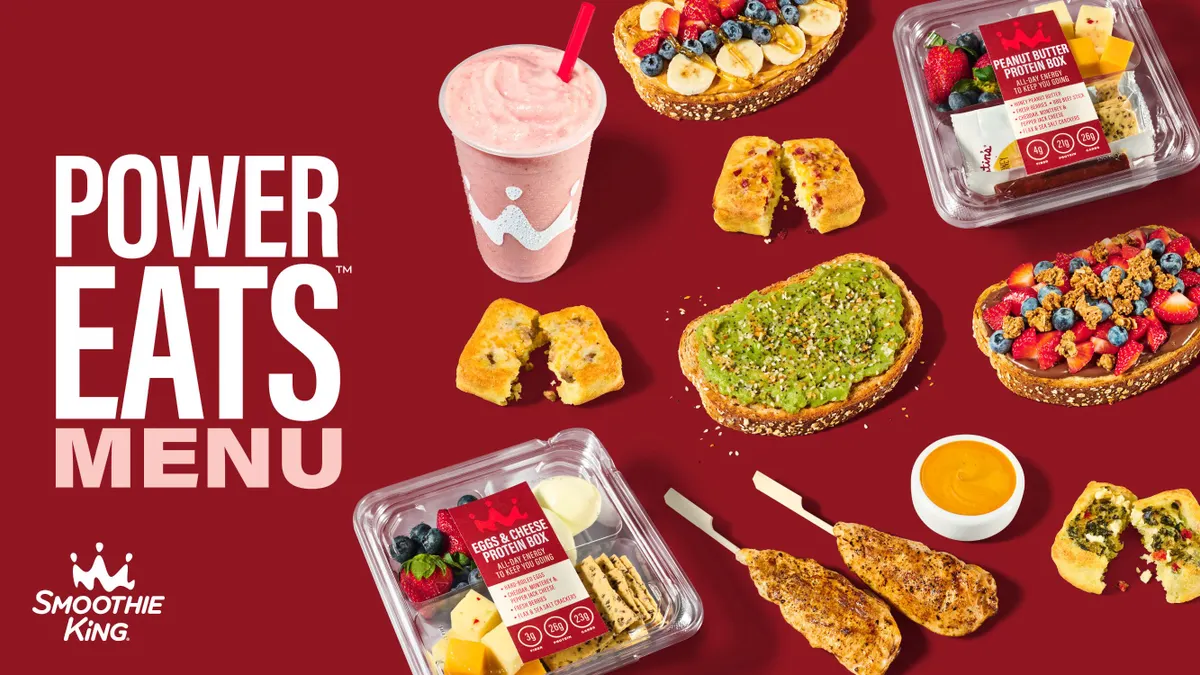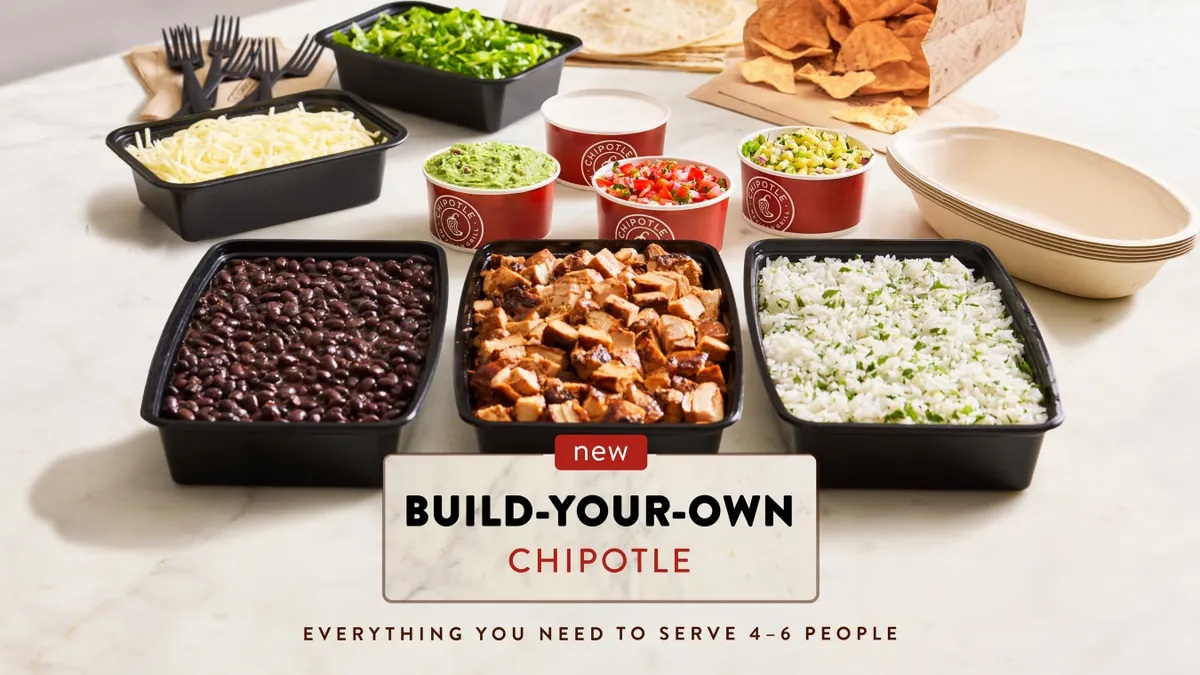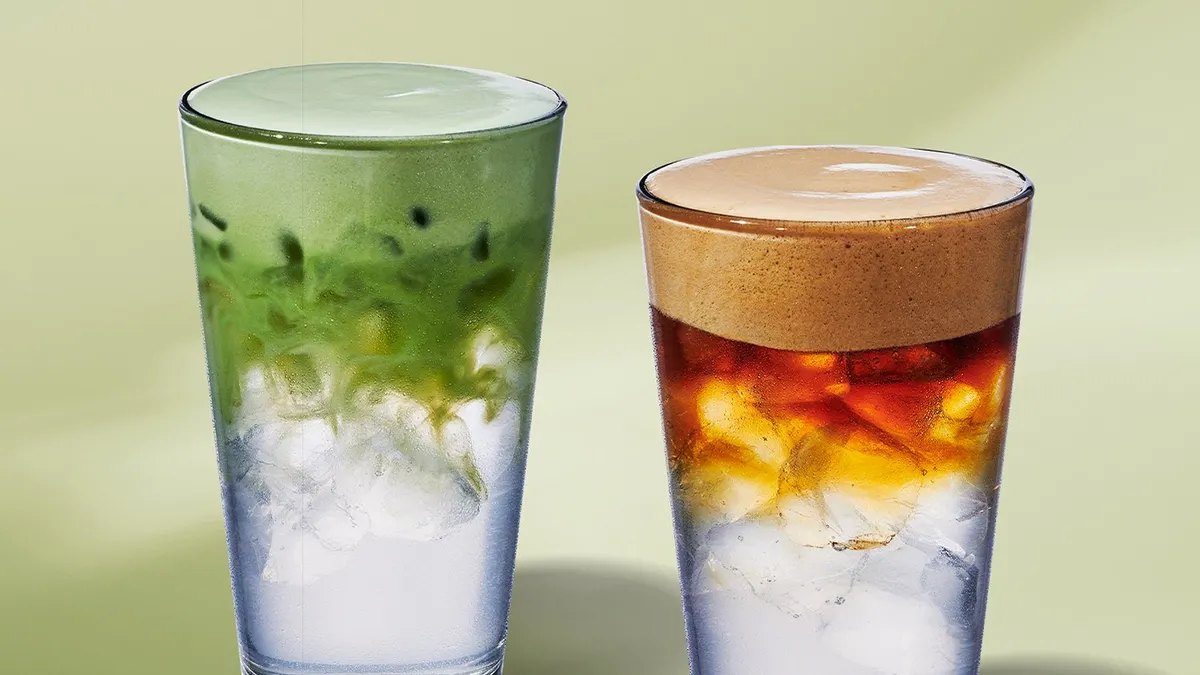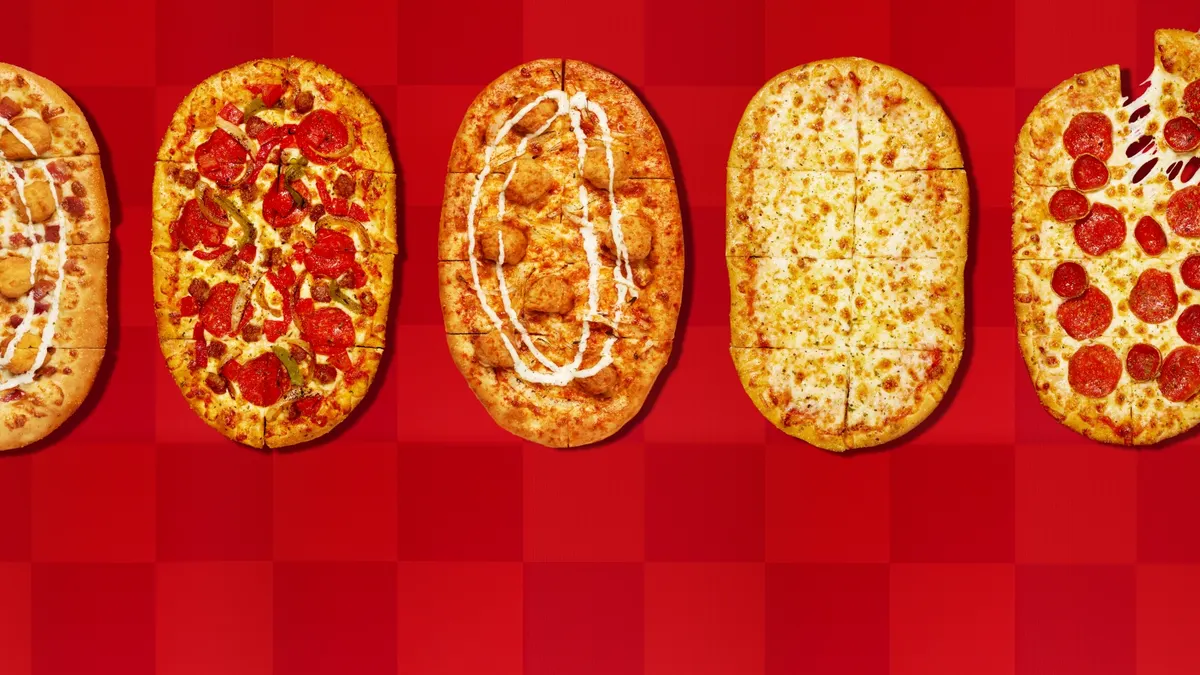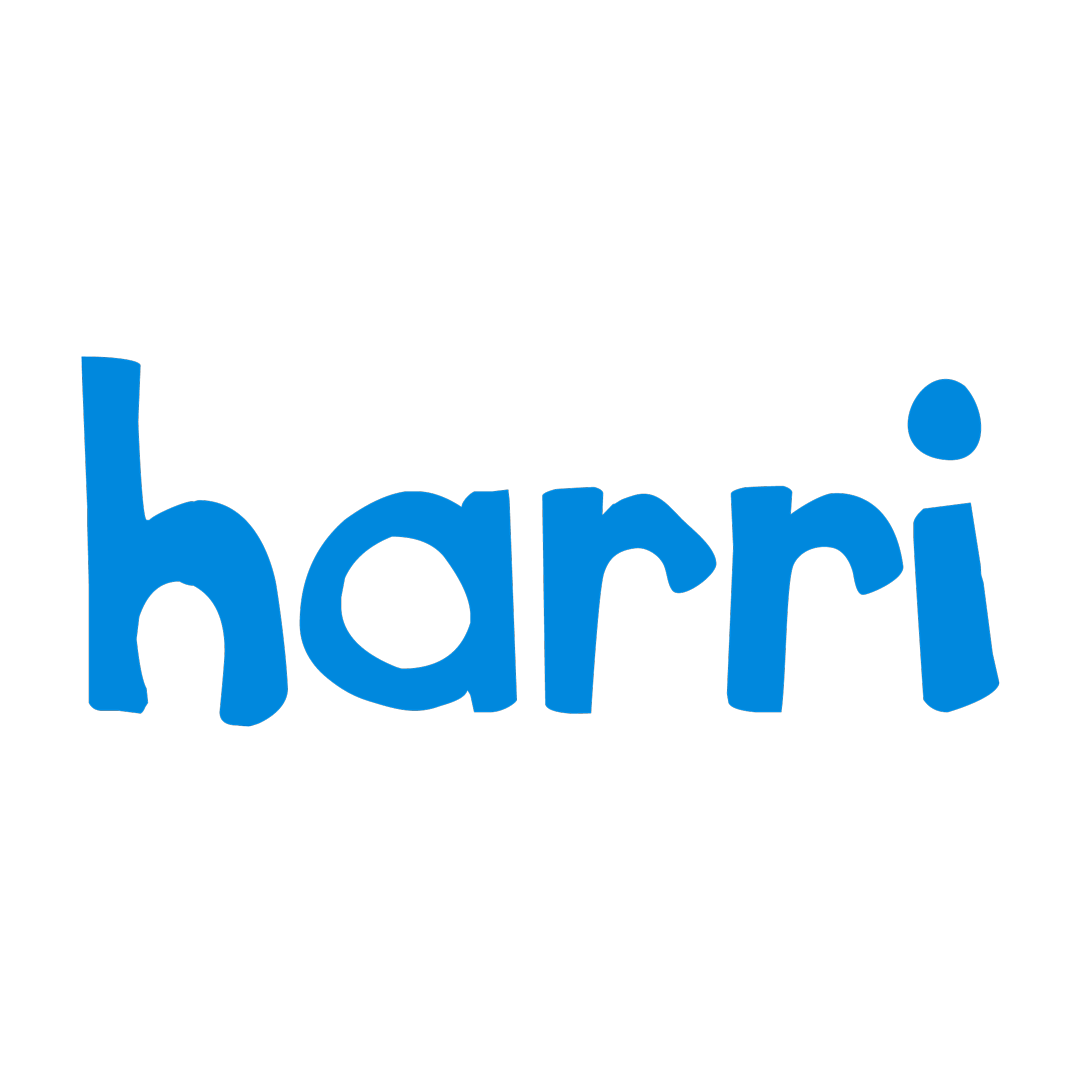Dutch Bros Coffee’s beverage menu is extensive, selling an array of flavored or protein-infused coffee options, chai lattes, lemonades, iced teas, energy drinks, smoothies, sparkling sodas and more.
With a “secret menu” that alone consists of 70 different flavor combinations, the chain’s variety allows the company to create new “exciting and fun drinks,” Debbie Beisswanger, the company’s senior vice president of brand marketing, said.
A growing number of restaurants are incorporating complex non-alcoholic beverages into their menus — an effort to capture a growing demand, especially among younger generations. McDonald’s plans to test new beverages inspired by its beverage-concept CosMc’s at its restaurants later this year. In December, Taco Bell opened a Live Más Café inside an existing restaurant to offer an extensive beverage menu.
About half of Americans say they planned to cut back on their alcohol consumption in 2025, according to a survey of 1,131 U.S. adults by marketing firm NCSolutions. The trend is more pronounced among younger generations, with 65% of drinking-aged Gen Zers and 57% of millennials saying they planned to reduce the amount of alcohol they drink this year.
Fifty-eight percent of those surveyed said they plan to try a nonalcoholic drink this year, including mocktails (28%) and THC- or CBD-infused beverages (26%), the report found. Others expressed interest in options such as nonalcoholic beer, wine and spirits.
With millennials showing “strikingly similar preferences” to Gen Zers, restaurants could conclude that alcohol-free beverages are more than just a passing trend, Deirdre McFarland, chief marketing and communications officer at NCSolutions, said.
“This shift suggests that restaurants have the opportunity to broaden their beverage menus to include a wider variety of low-ABV and nonalcoholic options,” said McFarland.
When a restaurant introduces a new drink, they need to evaluate consumer trends and ensure their employees are trained and able to make the new beverages. They also need to market those drinks, ensure that drink offerings do not overwhelm the menu, and consider what type of drink may resonate with their customers during particular dayparts.
But, by offering diverse beverage choices, restaurants can better capture the “evolving beverage choices of Americans,” said McFarland, “enticing those who might otherwise choose traditional options like soda, water or tea.”
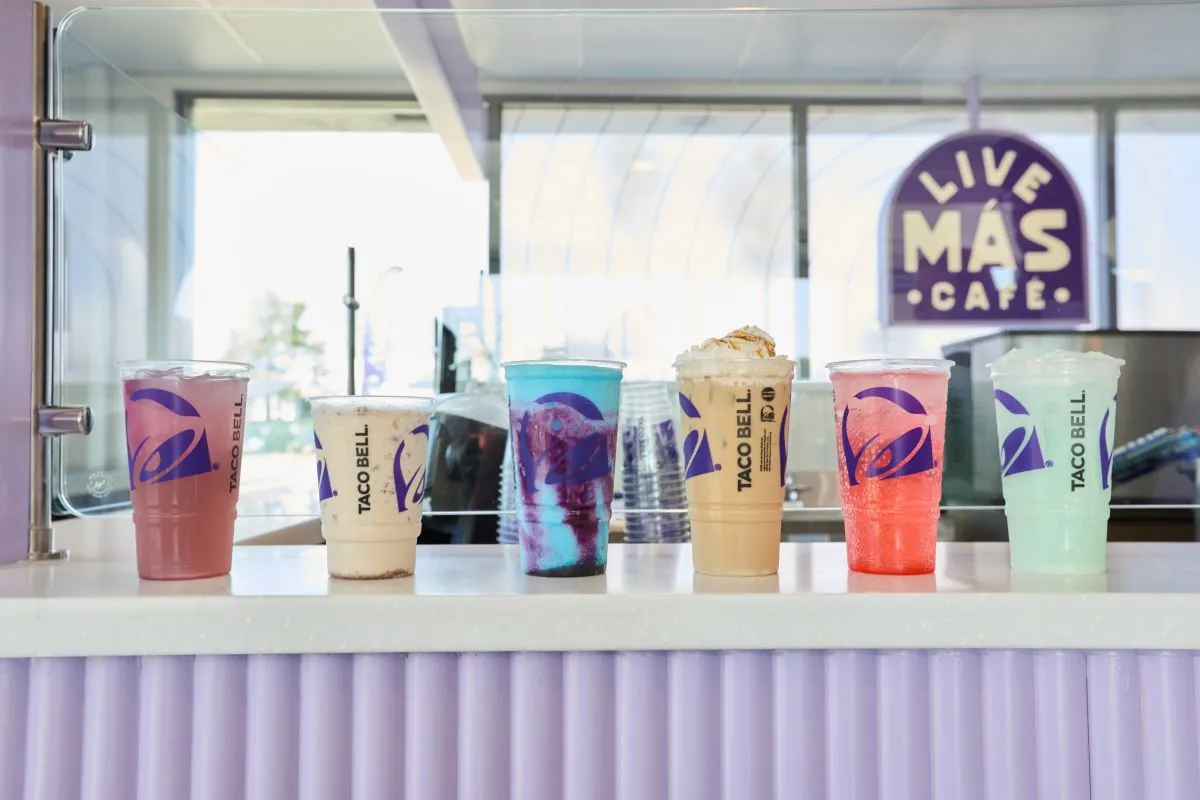
Tapping into consumer trends
A big focus among restaurants is on better-for-you options such as drinks with higher protein or functional ingredients, Kyle Newkirk, chief commercial officer at coffee supplier Westrock, said.
Because consumers are becoming more health-conscious, ingredients play a crucial role when it comes to reinventing beverages, Rocio Franco, senior consultant at Euromonitor International, said.
To accommodate this, restaurants can either create entirely new beverages or offer customization options to customers — such as adding Vitamin C or relaxation shots to certain drinks, said Franco. Those options can also increase average ticket size, she said.
Coffee shops can also offer energy-boosting drinks in the morning and relaxing or sleep-aiding beverages at night — diverse options that cater to customers’ varying needs throughout the day, said Franco.
It’s important for restaurants to keep an eye on current trends when figuring out whether to introduce new drink categories, said Newkirk. Those trends often start in the ready-to-drink retail space before moving into the away-from-home market, he said.
Dutch Bros’ menu innovation team factors in consumer trends, customer feedback and input from its vendors and its baristas when creating new drinks, said Beisswanger.
Peet’s Coffee also releases new drink categories based on emerging consumer trends and lessons from past beverage launches, Filipa Aguiar Loureiro, Peet’s head of retail product marketing, said.
“This allows us to develop drinks that align with both our expertise and the evolving taste of consumers,” said Aguiar Loureiro.
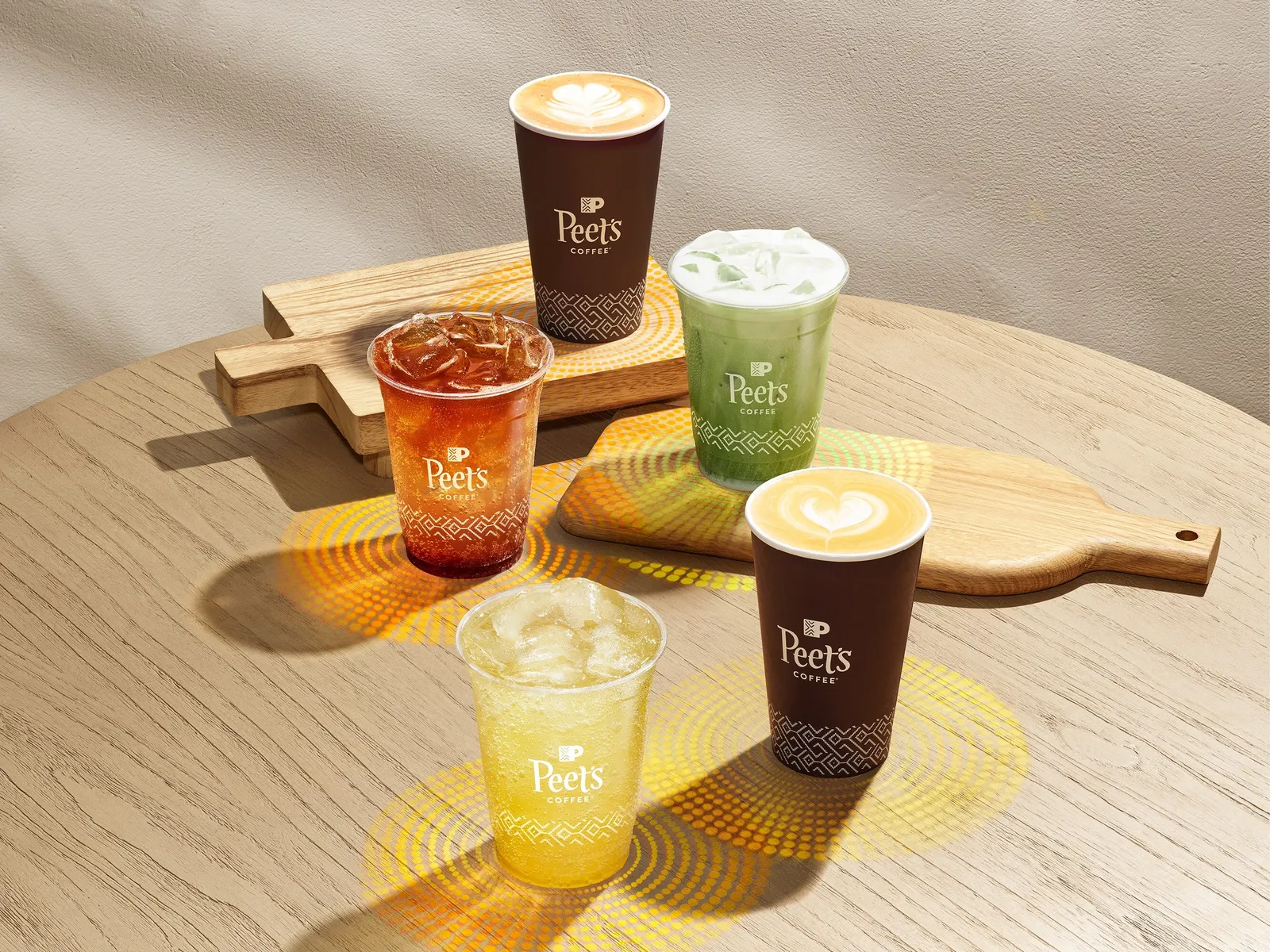
Finding the right drink
Peet’s tries to launch beverages with flavors that feel distinct from its competitors, Aguiar Loureiro said. Such beverages can be major money makers.
“Innovative drinks that are visually appealing and perform well on social media tend to have some of the highest margins on the menu,” Newkirk said.
But restaurants also need to have a clear cost of goods and margin target to ensure success and boost profitability when introducing new beverages, said Newkirk. They should be mindful of potential obstacles like labor, equipment and speed of service, while maintaining product quality, he said.
“Successful brands often thrive by launching bold, innovative flavors and unique toppings, even if they’re a bit polarizing,” said Newkirk. “However, it’s important to quickly phase out products that aren’t gaining traction.”
Having too many drink options on a menu can also overwhelm customers and staff and be difficult from an inventory management standpoint, said Franco.
Restaurants also need to make sure their research and development is on the same page as operations when it comes to knowing how the drinks are made and getting the equipment needed to deliver consistent results, while managing labor costs, said Newkirk.
Some drinks, such as collagen tea, may not seem appealing to customers, so it will be crucial for restaurants to market them in a way that will get customers to understand what they are, said Franco.
“The biggest challenge will be effective marketing and communication to help customers understand the benefits of a brand's specific product and distinguish it from the competition,” said Franco.
The right daypart and seasonal release
Considering the daypart that certain beverages may resonate with customers is important.
At Peet’s, hot beverages over-index in the mornings, whereas iced beverages are more popular in the afternoon, Aguiar Loureiro said. But the company has lately seen many younger consumers order cold beverages in the morning as well, she said.
“Overall, focusing on iced beverages allows us to have a more balanced morning and afternoon daypart distribution,” said Aguiar Loureiro.
The chain, for instance, launched its first-ever Bar Menu last year that featured a host of non-alcoholic mocktails designed to feature “sophisticated flavors and act as an afternoon pick-me-up,” said Aguiar Loureiro. In January, it launched a line of protein lattes. These medium-sized beverages contain 20 grams or more of protein and cater to morning routines when customers want an extra boost, said Aguiar Loureiro.
Drinks served at Dutch Bros can be served in the morning, afternoon and night, said Beisswanger.
“While you would think that our morning daypart is only coffee focused, we actually see a good amount of other drinks ordered as well,” said Beisswanger. “This really allows us to get innovative with our drink offerings to accommodate their needs.”
Getting staff up to speed
Dutch Bros introduces new beverage offerings that are easy for staff to learn how to make — allowing them to continue engaging with their customers, said Beisswanger. The company also works with its field leadership team to provide both digital and hands-on training to its workers, she said.
Peet’s helps their staff learn how to make new beverage items by providing detailed recipe cards and training videos, especially for more complex drinks, said Aguiar Loureiro. The company’s goal is to make preparation as intuitive as possible while preserving the handcrafted quality of its coffee, she said.
“While innovation is key, drinks that are too complex to execute during peak hours can slow down service and create inconsistencies in quality,” Aguiar Loureiro said.
A successful launch of a new beverage requires strong internal buy-in, said Aguiar Loureiro.
“Staff should feel confident and excited about new beverages,” said Aguiar Loureiro, “which is why we invest in detailed training — from recipe cards to instructional videos — to set them up for success.”


